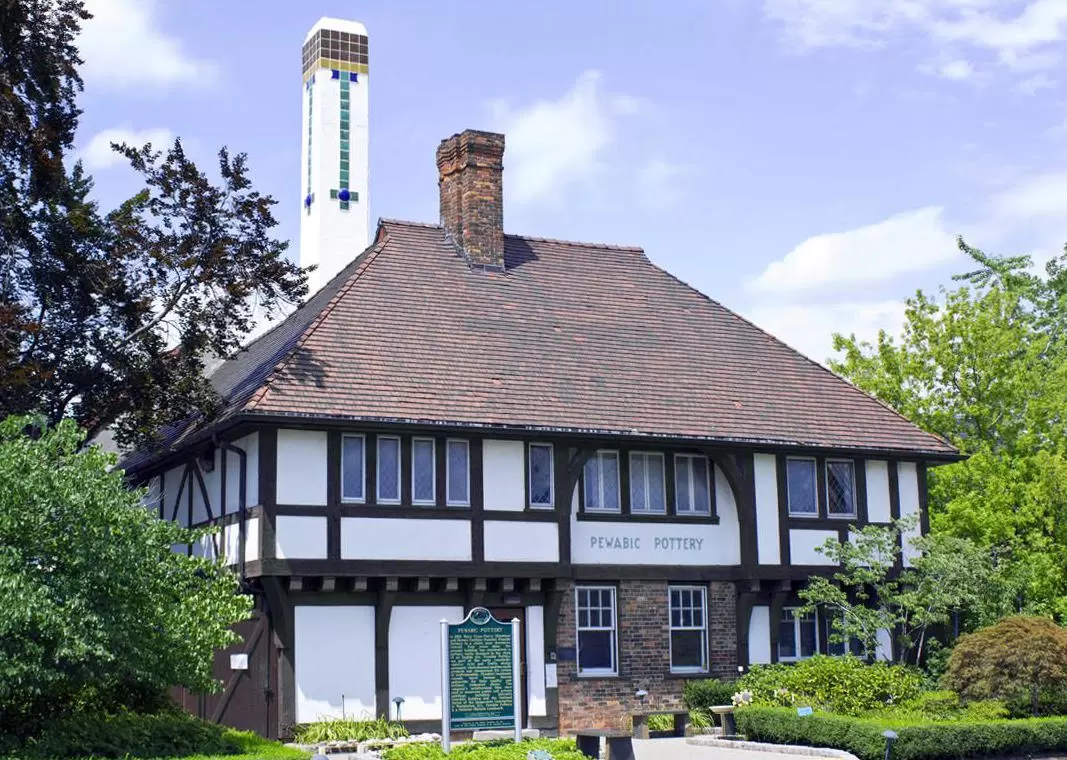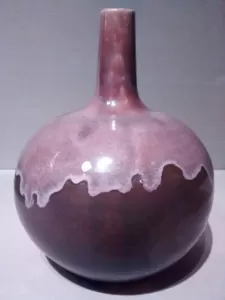Pewabic Pottery: Detroit’s Lasting Contribution to A&C
by Bruce Johnson
Editor’s note: this article has been republished in honor of women’s history month. Original date of publication: January 8th, 2013.

Pewabic Pottery of Detroit, Michigan: one of the oldest continually operating ceramics facilities in the country. First built in 1903, William Buck Stratton designed this building to house the pottery studio and eventually became the full production facility. Pewabic Pottery was started by Mary Chase Perry (Stratton).You can’t find much more humble beginnings than firing your first piece of pottery alongside a set of dentures in your dentist’s kiln.
Bored with decorating china with proper ladies of culture, Mary Chase Perry, carefully described as “an adventurous artist,” convinced Dr. Horace Caulkin to let her fire her first experimental vases in his backyard kiln. From that humble beginning in 1903 grew Pewabic Pottery, today considered one of the most desirable art potteries of the Arts & Crafts era.
Intrigued, no doubt, by the bold, 36-year-old potter, Dr. Caulkin proposed a partnership with Mary Chase Perry, naming their basement pottery after the nearby Pewabic River. They hired Joseph Herrick to turn the forms Perry designed so that she could concentrate on the development of rich, colorful matte glazes. The sparkling iridescence glazes, often dripping with color, soon characterized her style. Later, tiles were added to their production.
A century later, Pewabic collectors are of two schools.
The first collect the rare, early, hand-tooled vases Ms. Perry decorated during her first five years as a potter. These are often coated with a matte green glaze and can stand as tall as ten inches. Some are unmarked, while others reveal only the PEWABIC stamp under the glaze. Researchers estimate that as few as fifty of these early vases still exist.
As additional potters were hired, output at Pewabic grew and the firm specialized in iridescent pottery. Iridescent Pewabic vases were produced for more than half a century, explaining why they sell for far less than her first fifty. Collectors consider the largest and most colorful to be the best in this category, especially those with a multitude of complex colors. The Pewabic mark on these later vases includes the word DETROIT.
Despite losing her mentor Dr. Caulkin in 1923 and her husband, William Stratton, in 1938, Mary Chase Perry Stratton remained dedicated to Pewabic Pottery, managing the firm until she died in 1961 at the age of 94.
In 1981 administration of Pewabic Pottery was turned over to the nonprofit Pewabic Society. Today Pewabic Pottery is a multifaceted institution with active and growing education, exhibition, museum and design and fabrication programs. Pewabic fabricates heirloom quality architectural tiles for public and private installations, gift and commemorative tiles, vases, gardenware, ornaments and both reproductions and adaptations of its historic designs. It offers classes, workshops, lectures, internships and residency programs for studio potters and other artists.
And it’s a great way to spend an afternoon in Detroit.
– Bruce Johnson
Editor’s note: In fact, you can spend a few afternoons in Detroit among other art pottery collectors at the end of April during the AAPA’s own American Art Pottery Convention in Detroit, Michigan. One of the many stops during this convention is the Pewabic Pottery facility (see above) which still operates to this day. If you’d like to join other fans of Pewabic pottery, please see the link below,
Pewabic Pottery: http://www.pewabic.org.
AAPA Conference in Detroit featuring a visit to Pewabic: https://aapa.info/convention
,


